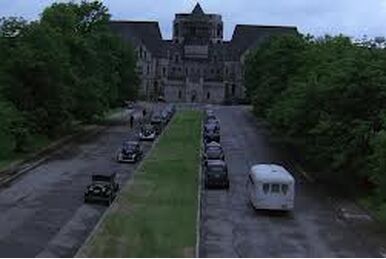What Are 5 Things Leonardo Da Vinci Is Famous For?
If you’ve ever wondered about the incredible legacy of Leonardo da Vinci, you’re in for a treat! Today, we’re going to dive into the world of this legendary figure and explore five of the most remarkable things he is famous for. Get ready to be amazed and inspired by the genius of Leonardo da Vinci!
When it comes to Leonardo da Vinci, there’s no shortage of fascinating accomplishments to discuss. From his breathtaking artworks to his groundbreaking inventions, da Vinci’s legacy is truly awe-inspiring. So, without further ado, let’s explore five things that make Leonardo da Vinci one of the most iconic figures in history. Get ready to embark on a journey through time and discover the incredible mind behind masterpieces like the Mona Lisa and The Last Supper, as well as the visionary behind inventions that were centuries ahead of their time. Get ready to uncover the genius of Leonardo da Vinci!
Leonardo da Vinci, the renowned Italian polymath, is famous for his remarkable contributions in various fields. Here are five things he is known for:
- Artistic Genius: Da Vinci’s iconic paintings, such as the Mona Lisa and The Last Supper, showcase his exceptional artistic skills.
- Inventor and Engineer: He conceptualized inventions ahead of his time, including flying machines, tanks, and bridges.
- Scientific Observations: Da Vinci’s meticulous scientific observations and anatomical studies made significant contributions to the fields of biology and anatomy.
- Architectural Designs: His architectural designs, like the ideal city layout, demonstrate his innovative thinking.
- Writings and Notebooks: Da Vinci’s extensive collection of notebooks contain a wealth of knowledge on various subjects, including art, science, and philosophy.

Leonardo da Vinci: A Genius of Many Talents
Leonardo da Vinci is widely regarded as one of the greatest minds in human history. His contributions to art, science, and engineering have left an indelible mark on the world. In this article, we will explore five of the many things that Leonardo da Vinci is famous for, showcasing his diverse range of talents and achievements.
1. Masterpieces of Art
Leonardo da Vinci was an exceptional artist, known for his iconic paintings such as the Mona Lisa and The Last Supper. His ability to capture human emotion and create lifelike portraits revolutionized the art world. Leonardo’s use of techniques such as sfumato, which creates a soft blending of colors, added depth and realism to his paintings. His artistry continues to captivate audiences centuries later, making him a true master of the Renaissance period.
Leonardo’s artistic brilliance extended beyond painting. He was also skilled in sculpture and anatomy, often dissecting cadavers to gain a deeper understanding of the human body. This knowledge allowed him to create anatomically accurate sculptures and drawings, showcasing his meticulous attention to detail.
Leonardo’s Artistic Legacy
Leonardo’s artistic legacy is immense, with his works inspiring countless artists throughout history. His ability to seamlessly intertwine creativity and scientific understanding set him apart from his contemporaries. Leonardo’s emphasis on observation and experimentation laid the foundation for future artistic movements, making him a true pioneer in the world of art.
2. Scientific Inquiry and Inventions
Leonardo da Vinci’s inquisitive mind led him to explore various scientific disciplines. He was fascinated by the natural world and sought to understand its inner workings. Leonardo made significant contributions to anatomy, geology, and engineering, among other fields.
Leonardo’s meticulous observations of the human body resulted in detailed anatomical drawings that were far ahead of his time. His study of human anatomy enabled him to accurately depict the internal structures of the body in his artwork. Leonardo’s notebooks, filled with intricate sketches and scientific observations, continue to be studied and revered by scientists and scholars.
Leonardo’s Engineering Marvels
In addition to his scientific inquiries, Leonardo was also an ingenious engineer. He conceptualized and designed numerous inventions, many of which were far ahead of their time. His designs for flying machines, war machines, and hydraulic systems showcased his innovative thinking and problem-solving abilities. Although some of his inventions were never built, they provided inspiration for future generations of inventors.
3. Architectural Marvels
Leonardo da Vinci’s architectural prowess is often overshadowed by his artistic and scientific achievements. However, his architectural designs were just as groundbreaking. Leonardo’s vision for urban planning included innovative ideas such as centralized sewage systems and circular city layouts. His architectural drawings displayed a keen understanding of aesthetics and functionality, showcasing his ability to merge beauty and practicality.
Leonardo’s Architectural Influence
While many of Leonardo’s architectural designs were never realized during his lifetime, they left a lasting impact on the field. His ideas and concepts paved the way for future architects, influencing the design of buildings and cities for centuries to come. Leonardo’s emphasis on harmony between humans and their environment continues to shape architectural philosophies today.
4. Inquiring Mind and Curiosity
One of Leonardo da Vinci’s defining characteristics was his insatiable curiosity. He possessed an unquenchable thirst for knowledge and was constantly seeking to expand his understanding of the world. Leonardo’s wide-ranging interests and intellectual pursuits allowed him to make groundbreaking discoveries across multiple fields.
Leonardo’s curiosity and desire for knowledge were evident in his extensive collection of notebooks. These notebooks served as repositories for his thoughts, observations, and ideas. They are a testament to his tireless exploration of the world around him, covering topics as diverse as mathematics, botany, and music.
Leonardo’s Endless Pursuit of Knowledge
Leonardo’s insatiable curiosity serves as a reminder of the importance of lifelong learning. His relentless pursuit of knowledge encourages us to embrace curiosity and never stop seeking answers. Leonardo’s multidisciplinary approach to learning and his ability to connect seemingly disparate fields of study continue to inspire intellectuals and scholars today.
5. Renaissance Man and Cultural Icon
Leonardo da Vinci’s diverse talents and accomplishments earned him the title of a Renaissance man. His ability to excel in multiple disciplines, from art to science to engineering, epitomizes the spirit of the Renaissance era. Leonardo’s contributions to various fields have solidified his status as a cultural icon, revered and celebrated around the world.
Leonardo’s impact extends far beyond his own time. His legacy serves as a testament to the power of human potential and the importance of embracing one’s passions. Leonardo da Vinci’s fame as a Renaissance man continues to inspire individuals to strive for greatness in their own pursuits.
Leonardo’s Enduring Legacy
Leonardo da Vinci’s lasting legacy is a testament to his extraordinary genius. His contributions to art, science, and engineering have shaped the course of human history. Leonardo’s insatiable curiosity, artistic mastery, and innovative thinking continue to inspire generations of thinkers, creators, and visionaries. As we marvel at his achievements, we are reminded of the boundless possibilities that await those who dare to dream and explore.
Key Takeaways: What are 5 things Leonardo da Vinci is famous for?
- Leonardo da Vinci was famous for his artistic talent and is considered one of the greatest painters of all time.
- He is also known for his scientific curiosity and inventions, such as the flying machine and the armored vehicle.
- Leonardo da Vinci’s notebooks reveal his keen observation skills and his interest in anatomy, leading to advancements in the understanding of human anatomy.
- He is famous for the Mona Lisa, a masterpiece that showcases his mastery of technique and his ability to capture the enigmatic smile.
- Leonardo da Vinci’s genius was not limited to art and science; he also excelled in engineering and architecture, designing innovative structures and infrastructure projects.
Frequently Asked Questions
Leonardo da Vinci is widely regarded as one of the greatest artists and thinkers of all time. He made significant contributions in various fields and left a lasting impact on the world. Here are five things Leonardo da Vinci is famous for:
1. What are Leonardo da Vinci’s most famous paintings?
Leonardo da Vinci is renowned for several iconic paintings, some of which include:
The Mona Lisa: This masterpiece is considered one of the most famous paintings in the world. It is known for its enigmatic smile and the meticulous attention to detail.
The Last Supper: This iconic mural depicts the biblical scene of Jesus and his disciples during the Last Supper. It is admired for its composition and the emotional expressions of the figures.
2. What inventions did Leonardo da Vinci create?
Leonardo da Vinci was not only an artist but also a brilliant inventor. Some of his notable inventions include:
Flying Machine: Leonardo designed and sketched various flying machines, including a parachute, an ornithopter (a machine resembling a bird with flapping wings), and a glider. Although these designs were not realized during his time, they laid the foundation for future aviation.
Armored Vehicle: Leonardo conceptualized an early version of an armored vehicle, known as the “Tank.” It had a circular shape with cannons placed on all sides, providing protection to the soldiers inside.
3. What contributions did Leonardo da Vinci make to anatomy?
Leonardo da Vinci made significant contributions to the field of anatomy. He conducted extensive studies on the human body, aiming to understand its structure and function. Some of his notable anatomical drawings include:
Vitruvian Man: This famous drawing depicts a male figure in two superimposed positions, illustrating the ideal proportions of the human body. It symbolizes the harmony between art and science.
Anatomical Studies: Leonardo meticulously dissected human corpses to gain a deeper understanding of anatomy. His detailed drawings of various body parts, such as the heart, brain, and muscles, are still studied and admired by scientists today.
4. What is Leonardo da Vinci’s contribution to science?
Leonardo da Vinci’s curiosity and scientific mindset led him to make significant contributions to various scientific fields. Some of his notable scientific achievements include:
Geological Studies: Leonardo conducted extensive geological studies, observing and documenting the formation of rocks, fossils, and natural phenomena. His observations laid the foundation for modern geology.
Optics and Light: Leonardo explored the properties of light and its interaction with different materials. He conducted experiments on reflection, refraction, and the behavior of light in water and air.
5. What is Leonardo da Vinci’s legacy?
Leonardo da Vinci’s legacy extends beyond his artistic and scientific achievements. He continues to inspire generations with his innovative thinking, artistic brilliance, and relentless curiosity. His works and ideas have had a profound impact on various fields, influencing artists, scientists, and inventors for centuries.
Leonardo’s interdisciplinary approach, combining art and science, serves as a reminder of the power of creativity and the importance of embracing diverse disciplines to drive innovation and understanding.
The Genius: Leonardo da Vinci Explained in 11 Minutes
Final Summary: Leonardo da Vinci’s Enduring Legacy
As we conclude our exploration of the remarkable life and contributions of Leonardo da Vinci, it becomes evident that he truly stands as one of history’s most influential figures. His genius spanned across various disciplines, leaving an indelible mark on art, science, engineering, and more. Leonardo da Vinci’s fame can be attributed to five key aspects of his legacy.
Firstly, da Vinci’s artistic prowess remains unrivaled. From the enigmatic smile of the Mona Lisa to the iconic Vitruvian Man, his paintings and drawings continue to captivate audiences worldwide. Secondly, his scientific curiosity and ingenuity paved the way for groundbreaking discoveries and inventions, such as his detailed anatomical studies and visionary concepts for flying machines.
Thirdly, Leonardo da Vinci’s architectural designs and engineering marvels showcased his ability to merge aesthetics with practicality. His concepts for grand structures and innovative infrastructure demonstrated his forward-thinking approach. Fourthly, his writings and notebooks provide invaluable insights into his thoughts, observations, and ideas, allowing us to delve into the mind of a true Renaissance man.
Lastly, Leonardo da Vinci’s enduring fame is a testament to his status as a cultural icon. His name has become synonymous with brilliance and creativity, inspiring countless artists, scientists, and innovators throughout the centuries. From the depths of the past to the present day, da Vinci’s influence continues to shape our understanding of the world and expand the boundaries of human potential.
In conclusion, Leonardo da Vinci’s legacy persists as a testament to the power of human intellect, creativity, and curiosity. His multifaceted talents and contributions in art, science, engineering, architecture, and literature have left an indelible mark on the world. The genius of da Vinci transcends time, reminding us of the limitless possibilities that can be achieved through imagination and dedication. Leonardo da Vinci will forever be celebrated as an icon of innovation and inspiration.






